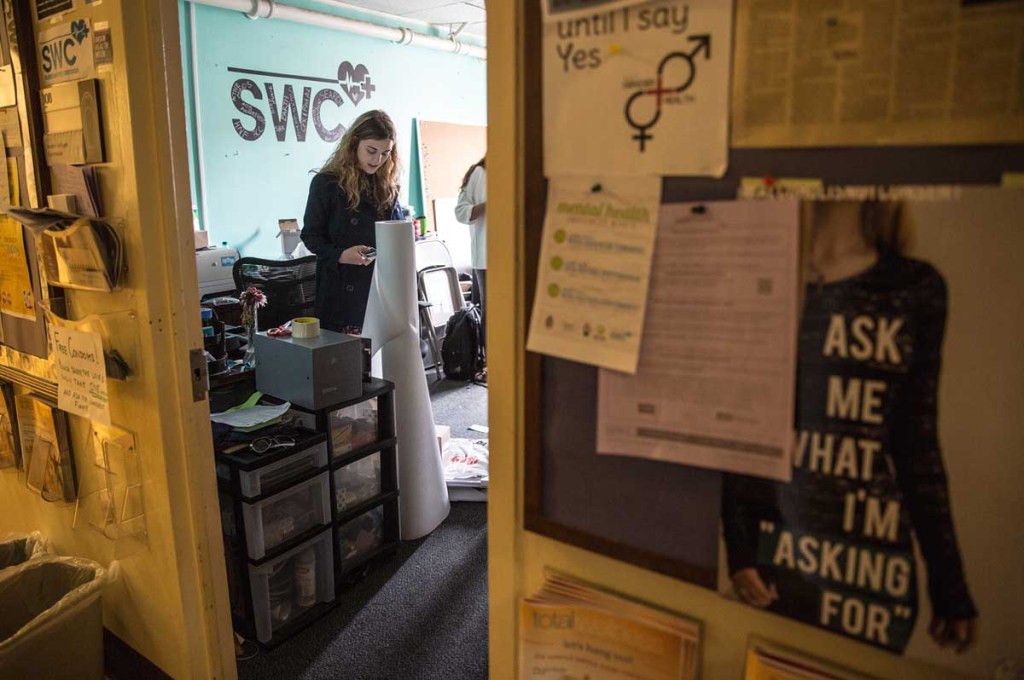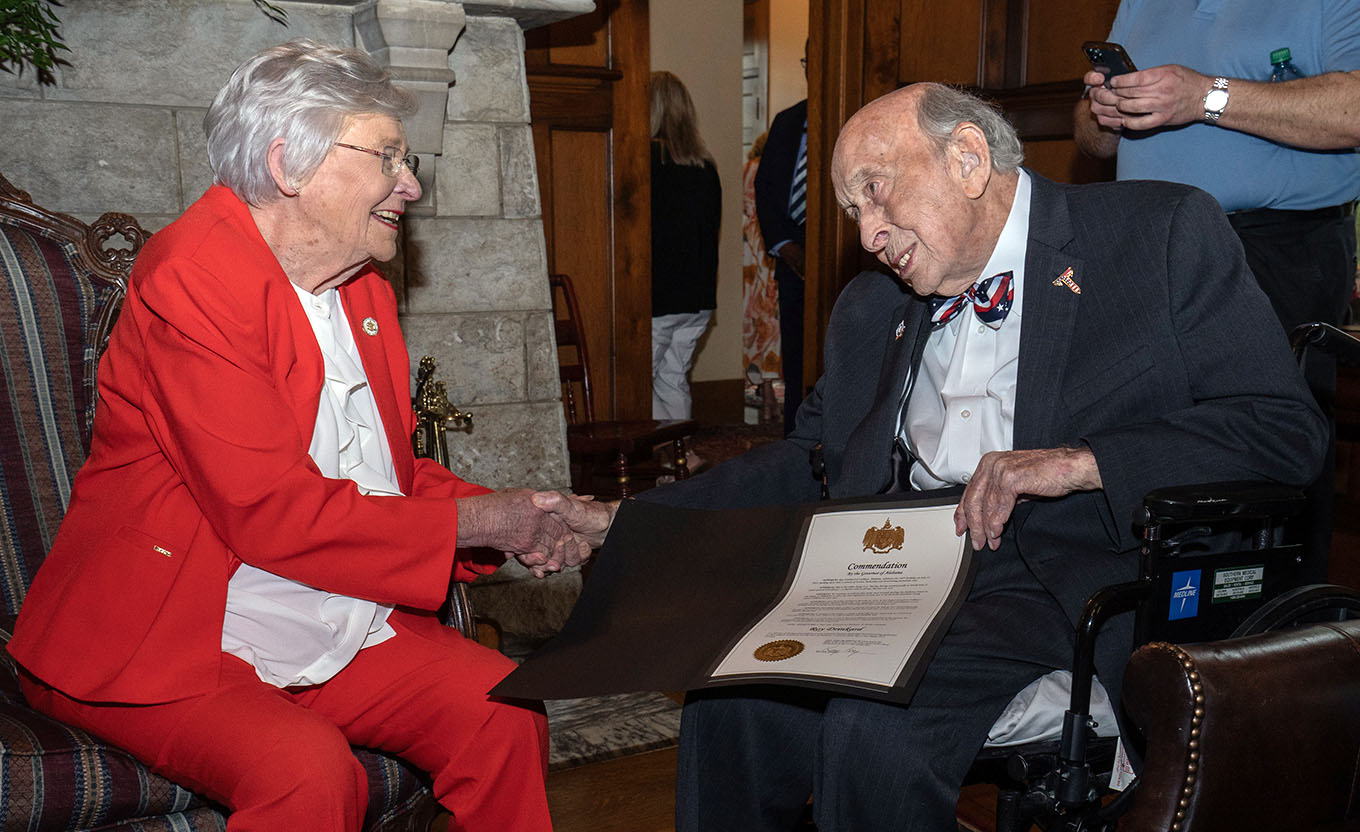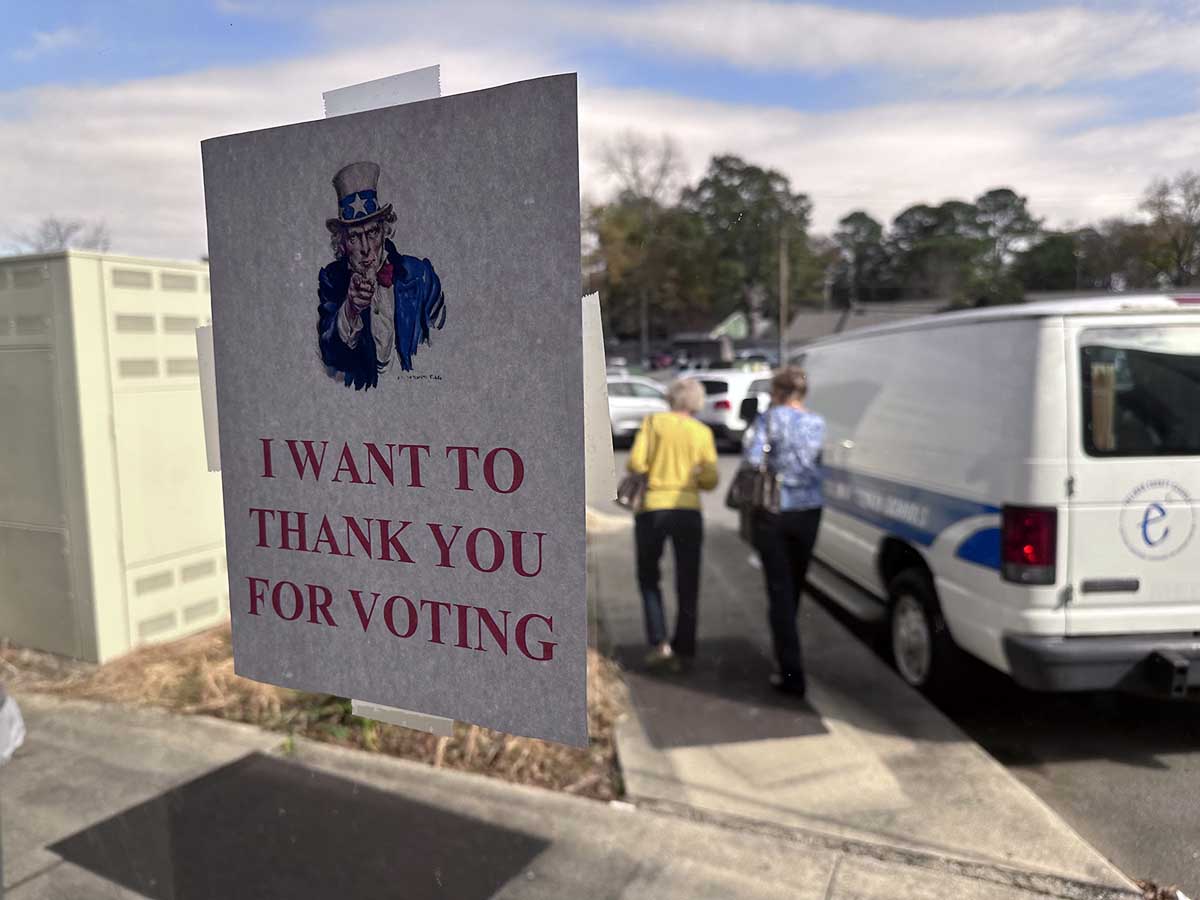Students are deeply divided on the meaning of consent
Published 8:00 am Monday, June 15, 2015

- Savannah Badalich, the founder of 7000 in Solidarity, in the Student Wellness Center office at UCLA, June 4. The organization held an event to pay respect to the 7,000 Bruins who have or will experience sexual violence over the course of their lifetime. The group is changing its name to Bruin Consent Coalition.
LOS ANGELES — Many embrace “no means no.” They have grown familiar with another three-word standard, “yes means yes.” But America’s college students are deeply divided on how to read the unspoken language of sex.
What if someone undresses? Or gets a condom? Or nods in agreement?
Trending
In each of those scenarios, a Washington Post-Kaiser Family Foundation poll found, at least 40 percent of current and recent college students said the action established consent for more sexual activity. And at least 40 percent said it did not.
Conflict and confusion about consent pose enormous challenges for colleges scrambling to prevent sexual assault. Many have discovered they need a new curriculum just to teach incoming students about the do’s and don’ts of intimate communication.
One of the biggest problems: Men sometimes see a green light when women are signaling yellow or red.
Another: Alcohol muddies everything. Many students find it hard to tell when someone has drunk too much and is therefore incapacitated, when a gesture or murmur in the dark might not be what it seems.
“You don’t always hear a yes,” said Luis Garcia, 21, a student at the University of Southern California who participated in the Post-Kaiser poll. “It’s more like a physical affirmation. That’s hard to judge when either party might be intoxicated or impaired. It does become super hard to explicitly define what should be said and what should be done.”
The poll, conducted from January to March, obtained views on sexual assault and related issues from a national sample of 1,053 women and men ages 17 to 26. All are current students or had been undergraduates at a four-year college within the past four years.
Trending
The findings, along with dozens of follow-up interviews, offer a rare window on student attitudes nationwide as colleges, states and the federal government focus on sexual violence.
More than 7 in 10 said their school had a sexual-assault-prevention program. Of those, most said students took the programs seriously. Lessons about sexual consent are often taught during student orientation through live skits or online tutorials.
The Obama administration, in a public relations campaign called It’s on Us, is reminding students that “if someone does not or cannot consent to sex, it’s rape.”
Here in California, Gov. Jerry Brown (D) last fall signed a landmark law establishing a standard of “affirmative consent” for sexual conduct in college. The standard, known as “yes means yes,” is gaining favor among schools nationwide. It requires “affirmative, conscious and voluntary agreement” between students before they begin sexual activity.
“Lack of protest or resistance does not mean consent,” the law says, “nor does silence mean consent.” People can withdraw their consent during an encounter, and consent can’t be presumed just because two people had sex in the past.
The University of California at Los Angeles teaches incoming students about consent using slides, video and a live performance of an acquaintance-rape scenario. People in the audience are asked at various points to hold up green cards if they think consent has been established, or red cards if they don’t.
Roxanne Neal, UCLA’s director of new student and transition programs, said the message is clear: “If you’re not sure, you just need to stop. Everyone can stop.”
In many ways, the Post-Kaiser poll found, young men get it.
Ninety-five percent of current and recent male students said sexual activity when one person is incapacitated or passed out is tantamount to sexual assault. Seventy-five percent said it does not indicate consent when the other person has not said no. And 66 percent said that sexual foreplay, such as kissing or touching, does not indicate consent.
“Consent needs to be something where both parties are actively saying yes, rather than not saying no,” said Alan Bowers, 25, a student at Utah State University. “It is completely realistic for both parties to say, ‘Yes, let’s do this.’ I don’t see any situation where that wouldn’t be possible.”
Joshua Johnstone, 21, a student at the University of North Carolina at Greensboro, said verbal consent is very important at the outset of a relationship. “Obviously situations are different every time,” he said. “I would say nodding is okay. But I’ve had a situation where somebody nodded at me and I asked again, just to be sure. And she said yes.”
Among women, 38 percent said it establishes consent for more sexual activity if someone gets a condom; 44 percent said the same is true if someone takes off his or her own clothes; and 51 percent said a nod of agreement signals consent. Women were much less likely than men to infer consent from sexual foreplay.
“In an ideal world, you would have verbal consent, but that’s not the way things happen usually,” said Cadence Crone, 20, a student at Salisbury University in Maryland. She said getting a condom or shedding clothes often implies agreement to further sexual activity. “That means I’m expecting something to happen,” she said.
But kissing and touching, she said, are different. “Foreplay could be just that,” she said. “It doesn’t mean the same thing to both people.”
Holly Copeland, 22, a recent graduate of Indiana State University, said a nod can be “miscommunicated and manipulated.” The same is true, she said, of someone getting undressed. “If a stripper is taking off her clothes,” Copeland said, “does that mean she’s consenting for the patron to touch her? No. There’s a line there.”
Copeland said the best policy is for two people to exchange a sober yes. It’s a huge challenge, she said, for two students who have been drinking to know whether one or both of them are too drunk to say yes. “Because who’s going to take a Breathalyzer before they try to get freaky?” she asked.
Nearly half said it is unclear whether sexual activity when both people have not given clear agreement amounts to sexual assault. The affirmative consent movement seeks to erase the ambiguity.
Affirmative consent has gained wide exposure in recent years as colleges have revised their student conduct policies in response to student activism, federal pressure and a sharply rising number of reports of sexual assault. The poll found 83 percent of men and women are aware of “yes means yes” and the underlying principle of clear and mutual agreement.
Sixty-nine percent said the standard is realistic, but 30 percent said it is not. Men were more dubious. (The poll’s margin of sampling error was plus or minus 3.5 percentage points. For answers from men or women only, it was five points.)
John Indermuehle, 20, a student at the University of Massachusetts at Lowell, said most men wouldn’t think to ask explicitly for consent “if it was clear the other party was interested.” Instead, he said, men try to read body language.
“In most cases, people go ahead if they think they’ve been given the go-ahead,” Indermuehle said. If someone tells them to stop, he said, they stop. “Most people would agree that no means no.”
Asked which standard is better for determining whether sexual activity is consensual, 34 percent preferred “yes means yes,” and 42 percent preferred “no means no.” But 23 percent said that in practice, there is not much difference.
Sometimes the key words in a sexual encounter are not yes or no. Those who are ambivalent might say “sure” or “fine” or “OK.”
A 22-year-old student at a public university in the Midwest said she once felt coerced into having sex by a man who refused to take a hint.
“It wasn’t rape, but it was kind of similar,” she said. “I technically did consent. I said ‘okay.’ . . . I was scared to say no. He was bigger, we were alone, he wouldn’t stop.”
Asked about things students could do to prevent sexual assault, 93 percent said it would be effective if men respected women more. That was far larger than the shares that endorsed the effectiveness of drinking less alcohol (78 percent) or avoiding casual hookups (64 percent).
Saalika Khan, 25, a student at Towson University outside Baltimore, said experience has taught her the benefit of explicit consent. One night several years ago, she said, a man tried to sneak into her bed while she was asleep, putting his arms around her waist and kissing her neck. She shoved, slapped and punched him, escaping the situation.
“I don’t know why guys think, ‘If I just do it, she’ll do it, too,’ ” Khan said. “I never understood that. There has to be a conversation, you know?”





